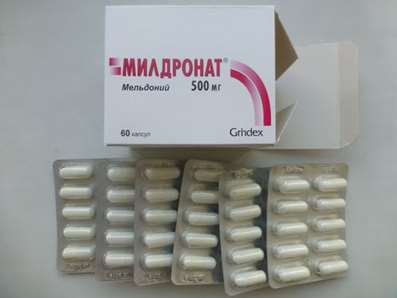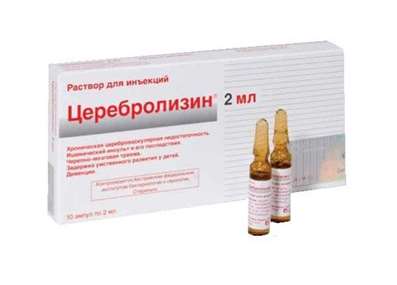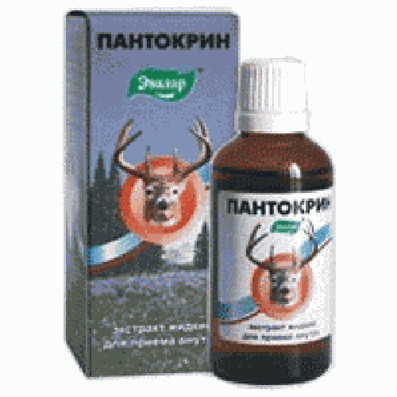Instruction for use: Dinitrogen oxide
I want this, give me price
Latin name: Dinitrogeni oxydum (genus. Dinitrogeni oxydi)
Chemical name
Nitrogen oxide
Gross formula
N2O
Pharmacological group:
Anesthetic means
The nosological classification (ICD-10)
R52.0 Acute pain: Acute pain syndrome; Acute pain syndrome with osteoarthritis; Acute pain syndrome of traumatic origin; Severe pain of a neurogenic nature; Severe pain; Pain syndrome at delivery
R52.1 Persistent non-recurrent pain: Pain syndrome in oncology practice; Pain syndrome pronounced; Pain syndrome in malignant neoplasms; Pain syndrome in cancer; Pain syndrome with tumors; Pain syndrome in cancer patients; Pain in malignant neoplasms; Pain in malignant tumors; Pain in tumors; Pain in cancer patients; Pain in bone metastases; Pain in cancer; Malignant pain syndrome; Intensive chronic pain; Intensive pain syndrome; Intensive non-curable pain syndrome; Intensive chronic pain syndrome; Unrestrained pain; Unrestrained pain; Tumor pain; Post-traumatic pain syndrome; Severe pain; Chronic pain; Chronic Pain Syndrome
Z100.0 * Anesthesiology and premedication: Abdominal surgery; Adenomectomy; Amputation; Angioplasty of the coronary arteries; Carotid artery angioplasty; Antiseptic treatment of skin in wounds; Antiseptic treatment of hands; Appendectomy; Atheroctomy; Balloon coronary angioplasty; Vaginal hysterectomy; Venous bypass; Interventions on the vagina and cervix; Interventions on the bladder; Interference in the oral cavity; Reconstructive-reconstructive operations; Hand hygiene of medical personnel; Gynecological Surgery; Gynecological interventions; Gynecological operations; Hypovolemic shock during surgery; Disinfection of purulent wounds; Disinfection of the edges of wounds; Diagnostic Interventions; Diagnostic procedures; Diathermocoagulation of the cervix; Long-term surgeries; Replacement of fistulous catheters; Infection in orthopedic surgical interventions; Artificial heart valve; Kistectomy; Short-term outpatient surgery; Short-term operations; Short-term surgical procedures; Cryotyreotomy; Blood loss during surgical interventions; Bleeding during surgery and in the postoperative period; Kuldotsentez; Laser coagulation; Laserocoagulation; Laser retinopathy of the retina; Laparoscopy; Laparoscopy in gynecology; Likvornaya fistula; Small gynecological operations; Small surgical interventions; Mastectomy and subsequent plastic surgery; Mediastinotomy; Microsurgical operations on the ear; Mukinging operations; Suturing; Minor surgery; Neurosurgical operation; Eclipse of the eyeball in ophthalmic surgery Orchiectomy; Pancreatectomy; Pericardectomy; The rehabilitation period after surgical operations; Reconvalence after surgical intervention; Percutaneous transluminal coronary angioplasty; Pleural Thoracocentesis; Pneumonia postoperative and post traumatic; Preparing for surgical procedures; Preparing for a surgical operation; Preparation of the surgeon's arms before surgery; Preparation of the colon for surgical interventions; Postoperative aspiration pneumonia in neurosurgical and thoracic operations; Postoperative nausea; Postoperative hemorrhage; Postoperative granuloma; Postoperative shock; Early postoperative period; Myocardial revascularization; Resection of the apex of the tooth root; Resection of the stomach; Bowel resection; Resection of the uterus; Liver resection; Small bowel resection; Resection of a part of the stomach; Reocclusion of the operated vessel; Gluing of tissues during surgical interventions; Suture removal; Condition after eye surgery; Condition after surgery; Condition after surgery in the nasal cavity;Condition after gastrectomy; Condition after resection of the small intestine; Condition after tonsillectomy; Condition after removal of duodenum; Condition after phlebectomy; Vascular Surgery; Splenectomy; Sterilization of surgical instrument; Sterilization of surgical instruments; Sternotomy; Dental surgery; Dental intervention on periodontal tissues; Strumectomy; Tonsillectomy; Thoracic surgery; Total gastrectomy; Transdermal intravascular coronary angioplasty; Transurethral resection; Turbinectomy; Removal of a tooth; Cataract removal; Removing Cysts; Removal of tonsils; Removal of myoma; Removal of mobile milk teeth; Removal of polyps; Removal of a broken tooth; Removal of the uterus; Removal of seams; Urethrotomy; Fistula of the luminal ducts; Frontoetmoidohaimorotomy; Surgical infection; Surgical treatment of chronic ulcers of extremities; Surgery; Surgery in the anus; Surgery on the large intestine; Surgical practice; Surgical procedure; Surgical interventions; Surgical interventions on the digestive tract; Surgical interventions on the urinary tract;Surgical interventions on the urinary system; Surgical interventions on the genitourinary system; Surgical intervention on the heart; Surgical procedures; Surgical operations; Surgical operations on veins; Surgical intervention; Vascular; Cholecystectomy; Partial resection of the stomach; Extraperitoneal hysterectomy; Percutaneous transluminal coronary angioplasty; Percutaneous transluminal angioplasty; Coronary artery bypass grafting; Extirpation of the tooth; Extirpation of infant teeth; Extirpation of pulp; Extracorporeal circulation; Extraction of the tooth; Extraction of teeth; Extraction of cataracts; Electrocoagulation; Endourological interventions; Episiotomy; Ethmoidotomy; Complications after tooth extraction
CAS code
10024-97-2
Characteristics of the substance Dinitrogen oxide
Colorless gas, heavier than air (relative density 1.527), characteristic odor. Soluble in water (1: 2). At 0 ° C and a pressure of 30 atm. (or at 20 ° C and 40 atm. pressure) is condensed into a colorless liquid. Does not ignite, but supports combustion.
Pharmacology
Pharmacological action - anesthesia.
Nonspecifically interacts with neuronal membranes, depresses the synaptic transmission of excitation in the central nervous system, disrupts the transmission of afferent impulses, changes the cortical-subcortical relationships, the functions of the intermediate, middle and spinal cord. Anesthesia develops using 94-95% of the content in the inspired air (which is unacceptable due to the development of hypoxia). Small concentrations cause a feeling of intoxication and mild drowsiness. Anesthesiology uses a mixture of 80% dinitrogen oxide and 20% oxygen, the effect reaches the initial level of the surgical anesthesia stage; usually used in combination with other more active means for anesthesia and muscle relaxants. Termination of inhalation leads to a rapid awakening without the phenomena of aftereffect. Has a high analgesic activity. Increases heart rate, causes narrowing of peripheral vessels, may increase intracranial pressure, depress respiration. Absorbed into the blood through the lungs. In the body is not metabolized, is in a dissolved state in the plasma. It is excreted completely unchanged in the form of light (10-15 min), a small amount - through the skin.
Application of the substance Dinitrogen oxide
General anesthesia (introduction to anesthesia and maintenance of anesthesia); relief of pain syndrome in the postoperative period (prevention of traumatic shock), in childbirth, unstable angina pectoris, myocardial infarction, acute pancreatitis, etc .; anesthesia in the performance of medical procedures requiring disconnection of consciousness.
Contraindications
Hypersensitivity; at the relief of pain syndrome - severe diseases of the nervous system, chronic alcoholism, the state of alcoholic intoxication (excitement, hallucinations are possible).
Side effects of the substance Dinitrogen oxide
During the introduction to anesthesia, supraventricular arrhythmias, bradycardia, circulatory failure; after coming out of anesthesia - diffuse hypoxia, postnarcosis delirium: sensation of anxiety, confusion, agitation, hallucinations, nervousness, motor anxiety; with prolonged use - leukopenia, CNS damage, respiratory depression, nausea, vomiting, malignant hyperthermic crisis, postoperative chills.
Interaction
Strengthens the effects of antihypertensive (especially - diazoxide, ganglion blockers, chlorpromazine, diuretics), anticoagulant (coumarin and indanedione derivatives), depressing central nervous system and respiratory medications. Amiodarone increases the risk of bradycardia (not atropine-stopable) and hypotension, xanthine - arrhythmia. Fentanyl and its derivatives increase the effect on the cardiovascular system (decrease in heart rate and minute volume of the heart). Methyldopa promotes the development of general anesthesia.
Overdose
Symptoms: bradycardia, arrhythmias, circulatory insufficiency, hypotension, hyperthermic crisis, respiratory depression, delirium.
Treatment: with bradycardia - the introduction of 0.3-0.6 mg of atropine, arrhythmias - correction of the gas content in the blood, circulatory insufficiency and hypotension - the introduction of plasma or plasma-substituting agents, reducing the depth or stopping anesthesia, with hyperthermic crisis - stopping inhalation, increased delivery oxygen, the introduction of antipyretics, correction of water-salt balance and metabolic acidosis, if necessary, administer dantrolene (1 mg / kg) IV drip and continue the injection until the symptoms of the crisis disappear (maximum ummarnaya dose of 10 mg / kg). To prevent recurrence of the crisis within 1-3 days after the operation, dantrolen is administered orally or IV (4-8 mg / kg / day in 4 divided doses). Inhibition of respiration or inadequate postoperative ventilation of the lungs necessitates a reduction in the dose of anesthetic (if it is still used), airway patency and ventilation. In the case of the development of delirium after leaving the anesthesia, small doses of the narcotic analgesic are administered.
Routes of administration
Inhalation.
Precautions for the substance Dinitrogen oxide
Inhalation of the mixture can be at an oxygen content of at least 30%, and after stopping inhalation, it is necessary to continue supplying oxygen for 5 minutes (prevention of hypoxia). To reduce emotional excitement, prevent nausea and vomiting and potentiation of the action, a premedication is shown: intravenous injection of a 0.5 ml solution of diazepam (5-10 mg), 2-3 ml of 0.25% solution of droperidol (5, 0-7.5 mg). It is necessary to monitor blood pressure, heart rate, heart rate, monitor breathing and gas exchange, body temperature. Care should be taken in the presence of air cysts in the lungs, kidneys or occlusion of the middle ear, air embolism, acute intestinal obstruction or pneumothorax, during pneumoencephalography or soon after it (increases the pressure inside the cavities or the volume of cavities containing air). They are used with caution in cases of craniocerebral trauma, increased intracranial pressure in the history, extensive intracranial lesion or tumor, pronounced hypoxia and violation of the diffusion of gases in the lungs. Patients with chronic alcoholism require higher concentrations.
Special instructions
For medical personnel, prolonged exposure to dinitrogen oxide increases the risk of leukopenia. During use, periodic pumping of gas from the cuff of the endotracheal tube is recommended. Mixtures with ether, cyclopropane, chloroethyl at certain concentrations are explosive.

 Cart
Cart





